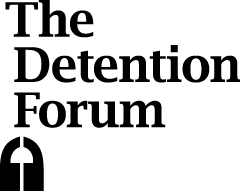This blog was written by John Borrie for UAI in January 2021. John Borrie has worked in the arms control and disarmament field for many years as a diplomat, international civil servant and researcher. He has written widely on nuclear weapons and other strategic technologies, most recently with the United Nations Institute for Disarmament Research, and he is an Associate Fellow in international security at Chatham House. The views expressed are his own.
The invasion of the Capitol Building in Washington DC by a right-wing pro-Trump mob this January shockingly drew attention to the potential for misuse of US Presidential power. It has led to concern in certain quarters that, in the wake of the appalling Capitol Hill episode instigated by Trump in support of his false claims that he won November’s election, he might just be bold enough to try to divert attention from his domestic problems by, say, attacking Iran. It led Nancy Pelosi, the Speaker of the House of Representatives, to approach US military leaders to seek assurances from them that they would not follow orders from President Trump if in the final days of his term he told them to launch a military attack or deploy his sole authority to use nuclear weapons.
If such a prospect seems far-fetched – if anything still is in American politics – it nevertheless constitutes a jarring reminder that nuclear weapons remain a factor in world politics on the eve of the entry into force of a new multilateral agreement, the Treaty on the Prohibition of Nuclear Weapons (TPNW). The US and other nuclear-armed countries oppose the TPNW and are unlikely to join it. What then will change?
It might surprise some readers that more than thirty years after the Cold War ended, the US President can launch nuclear weapons on his sole authority or, indeed, that nuclear weapons are even still considered relevant. In fact, the nuclear weapons complex is in rude health. Today there are nine nuclear-armed states. This is fortunately not the cascade of dozens of nuclear powers that, in the 1960s, President John F. Kennedy feared would emerge. Instead, later that decade, at the instigation of Ireland, the Nuclear Non-Proliferation Treaty (NPT) was adopted. The NPT shut the door on nuclear weapon possession to all but five countries (China, France, Russia, the UK and US – which happened to be the permanent five on the Security Council). Three countries never joined. Israel is thought to have had nuclear weapons since the 1960s. Pakistan and India went nuclear in the 1990s, followed by North Korea in 2006, which had earlier withdrawn from the NPT.
Then there are the nuclear client states. Today, dozens of countries in Europe, Asia and the Pacific rely on American nuclear weapons under the doctrine of ‘extended nuclear deterrence’. In some cases, as in NATO, this extends to nuclear-sharing arrangements in which, in the event of nuclear war, bases, aircraft and aircrew of non-nuclear-allies, such as Belgium, Germany and Italy, would be utilised to deliver nuclear strikes against targets in potential adversaries like Russia. NATO’s 30 member states, along with others such as Australia, Japan and the Republic of Korea, rationalize their postures by stating that although committed to a nuclear-weapon-free world, they will continue to rely on nuclear weapons for their security while these arms continue to exist. Embedded in this tautology is the point that nuclear weapons and alliance identity are mutually reinforcing, and in reality are as much for assurance as deterrence.
Today it is estimated that there are between 13,000 and 14,000 nuclear weapons in the arsenals of the nine nuclear-armed states. About 90 percent of these weapons are American and Russian, although China may now be significantly enlarging its much smaller nuclear arsenal. Many of today’s nuclear weapons are far more powerful and flexible than the relatively primitive atomic weapons dropped on Hiroshima and Nagasaki in 1945. And all the nuclear-armed States are modernising their nuclear capabilities for the decades ahead at vast expense. All of which would appear to be at odds with the commitment to achieving a nuclear-weapon-free world that was part of the NPT ‘grand bargain’ and to which all of the nuclear-armed states have said in the past they aspire.
This situation is not lost on the world’s non-nuclear-armed or allied states – the nuclear ‘have-nots’ that are now being bullied from joining the TPNW. The stewardship of the NPT regime has served to rob the nuclear have-nots of agency because they have no leverage: the nuclear-weapon-states and their allies resist time-bound frameworks for progress on nuclear disarmament, and forever maintain that security conditions are not yet right to transition away from reliance on nuclear weapons. But if nuclear weapons are so special, why shouldn’t any country that wants them not acquire them? In the face of this dissonance there is continued erosion and the rising risk of eventual collapse of the nuclear non-proliferation regime. Meanwhile, the risk of use of nuclear weapons is ever-present, whether due to an irresponsible leader’s reckless act, accident, miscalculation or inadvertent escalation in an international crisis involving nuclear-armed powers.
It is therefore significant that more than 120 states gathered at negotiations at the United Nations in New York in July 2017 and adopted the Treaty on the Prohibition of Nuclear Weapons. Among its provisions, the TPNW includes a comprehensive set of prohibitions on participating in any nuclear weapon activities. These include “undertakings not to develop, test, produce, acquire, possess, stockpile, use or threaten to use nuclear weapons. The Treaty also prohibits the deployment of nuclear weapons on national territory and the provision of assistance to any State in the conduct of prohibited activities. States parties will be obliged to prevent and suppress any activity prohibited under the TPNW undertaken by persons or on territory under its jurisdiction or control. The Treaty also obliges States parties to provide adequate assistance to individuals affected by the use or testing of nuclear weapons, as well as to take necessary and appropriate measure of environmental remediation in areas under its jurisdiction or control contaminated as a result of activities related to the testing or use of nuclear weapons.”
The nuclear-armed States, including the US, United Kingdom and France bitterly oppose the TPNW. Not only did these states refuse to participate in the negotiations, in most cases they would not even attend earlier international humanitarian conferences to exchange information to better understand the human consequences of nuclear weapon use. Their officials have criticised the new Treaty, for instance claiming it is legally incompatible with the NPT or will otherwise undermine it (although all of the members of the TPNW belong to the NPT). They also claim the TPNW will create pressure on liberal democracies (as opposed to authoritarian nuclear powers) to make progress toward a nuclear-weapon-free world, which they say would be dangerous and naïve. Seen in their totality, the criticisms of the TPNW amount to claiming it will be ineffective, while asserting it is dangerous because it will be effective.
In reality, it is too soon to know how effective the TPNW will be. It was inspired by the examples of the international anti-personnel mine and cluster munitions ban treaty campaigns. These campaigns were spearheaded by civil society working in partnership with likeminded coalitions of medium and small-sized states and focused on the humanitarian impacts of those weapons and their indiscriminate effects. Each adopted high international standards – prohibitions – that would contribute to stigmatising the weapon of concern. Today, anti-personnel mine and cluster bomb use have not entirely dried up. But there is ample evidence to suggest that these treaty regimes have impacted the behaviour of states – including non-signatory states – to restrain them from continued use and possession.
Nuclear weapons are of much greater strategic significance than landmines or cluster munitions, of course. Nevertheless, those involved in international efforts culminating in the TPNW drew inspiration from those prior initiatives, and likewise sought to constructively upset the status quo through successive phases of cooperative effort between governments and civil society in order to bring about the emergence of a norm against the weapon in question.
Meanwhile, much of the impact of nuclear weapons on international politics is through their supposed deterrent effects. And, as mentioned earlier, nuclear weapons offer assurance to allies in ways that make nuclear weapons part of the currency of hegemony and power for possessors and clients alike. President Trump’s unpredictability, his derisory attitude to longstanding allies, and America’s current turmoil and international weakness have devalued that currency of power in ways that serve to call nuclear weapons into question as never before. These issues will not disappear on January 20 when Trump presumably rides into the sunset on his Mar-a-Lago golf cart and Joe Biden takes over the White House. The absence of US allies’ confidence in Washington has increasingly been laid bare and will take time and strenuous US leadership to restore, if it even can be. It’s hard to see how nuclear weapons, with all of their costs and risks, will really help. Nuclear weapons have been, in effect, organising symbols for American-led alliances, but they are not the same as that confidence, and cannot substitute for it.
Two days after President Biden’s inauguration, on 22 January, the TPNW will enter into force for the 51 or more states that by then have joined it. This Treaty points to the international high road on nuclear weapons – as a reminder and, yes, continued irritant to the nuclear-armed powers and their allies. It belies their claims as to the legitimacy of nuclear weapons or that there is even broad tacit acceptance about their continued necessity. The TPNW will be a tool for citizens and taxpayers to question the nuclear policies and decisions of their governments domestically. It will make it more difficult for investment in companies involved in the nuclear weapons complex. The TPNW will strengthen the non-proliferation norm and draw greater attention to the need for states to transition away from continued reliance on nuclear weapons. And the new Treaty can be expected to gain in international adherence over time as more states decide to support it.
At the same time, the TPNW faces significant hurdles. In the immediate term, its members must set up a workable regime and give effect to implementing its prohibitions and positive obligations. In a COVID-constrained world this would be practically, financially and politically challenging even without the overt derision the TPNW regime faces from countries like the US, Russia and France. So, once its entry into force has been celebrated, implementation is what the TPNW’s supporters need to focus on – and not be distracted by the Treaty’s detractors. Indeed, it can be argued that even those states not party to the TPNW, including the US, actually have an interest in its long-term success. This is not least for its non-proliferation benefit, but because the TPNW offers a constructive means to promote debate and policy change within the domestic political environments and international alliances of nuclear-reliant states that could generate momentum to speed the transition away from that reliance. This is in everyone’s long term interest.
The Trump presidency and the Covid-19 pandemic constitute painful but important reminders that not even the world’s most advanced, powerful governments are beyond question or above catastrophic error. Beyond questioning who should be in charge of pressing the nuclear button, leaders, lawmakers and military leaders in the US and abroad should ask whether current nuclear postures, readiness levels and capabilities are really still worth the risk or cost. The TPNW’s entry into force shows that many of the world’s governments are already taking an unequivocal position on nuclear weapons in this regard, and their commitment to achieving a nuclear-weapon-free world should be respected and emulated.
UAI: The International Campaign to Abolish Nuclear Weapons (ICAN) provides up-to-date information on the States that have signed the Treaty on the Prohibition of Nuclear Weapons (TPNW) and those that have ratified it in that they have used domestic procedures to make it law and notified other State parties that they consent to be bound by it.
See: https://www.icanw.org/signature_and_ratification_status
Photo credit © International Campaign to Abolish Nuclear Weapons (ICAN)
The views expressed in this opinion piece do not necessarily reflect those of United Against Inhumanity.










